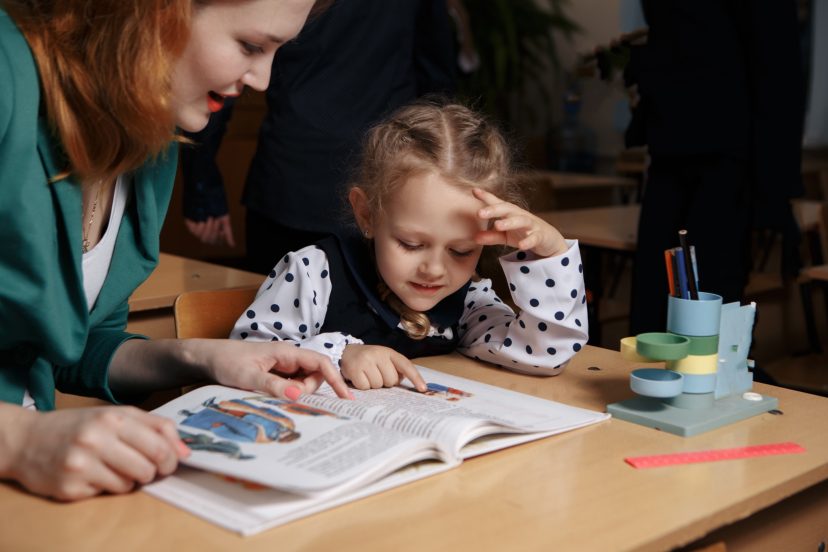Children Learning Reading Programe: A Guide for Parents to Foster Early Literacy
As a parent and child development enthusiast, I’ve seen firsthand the impact that reading can have on a child’s growth. Early literacy isn’t just about learning to read; it’s about opening doors to a world of imagination, knowledge, and confidence. In this comprehensive guide, I’ll share helpful suggestions and reasons why they are beneficial for your child’s journey to becoming a proficient reader. We will also have a look into one of the best reading programes available: Children Learning Reading

Why Early Literacy Matters
From the moment they’re born, our children are equipped with an innate curiosity about the world around them. Introducing them to reading early on taps into this curiosity, setting the foundation for a lifelong love of learning. Research shows that early literacy is linked to academic success, emotional regulation, better communication skills, and enhanced critical thinking.
Understanding the Basics of Phonics
The basic process of teaching phonics and phonemic awareness to children first involves teaching them the letters and letter sounds. The next step is to teach the child to combine (or blend) various letter sounds together to form words. The final step involves moving on to reading sentences and simple stories.
This is a logical progression for children to learn reading, where they develop accuracy in decoding words and pronouncing words. This method of teaching also helps the child to spell correctly. Gradually, the different elements of phonics are combined to produce new words, and leads to the discovery of new words by the child using this process which becomes an “automatic reflex”.
Setting the Stage for Success
The journey to literacy begins with laying the right foundations. By crafting an environment conducive to learning, we set our children up for success. This means prioritizing reading within the family routine, selecting appropriate learning materials, and maintaining a positive, supportive attitude towards our children’s literacy efforts.
Creating a Literacy-Rich Environment
A literacy-rich environment is one which gives children plenty of opportunities to engage with words. A space where books are within easy reach, labels are used to identify objects, and where reading is as routine as mealtime. In such an environment, literacy blooms as naturally as speaking.
Choosing the Right Reading Program
Selecting an effective reading program is crucial. It must resonate with your child’s interests and learning style while also being grounded in sound educational pedagogy. A good program acts not just as a teacher, but as a gateway to the vast world of literacy.
A robust reading program is characterized by clear objectives, phonics-based instruction, engaging content, and supportive resources. It should be adaptable to individual learning paces and provide a step-by-step approach that builds reading skills systematically.
The Children Learning Reading Program: An Overview
The Children Learning Reading Phonics Foundations Reading Program is an educational package which aims to teach children to read through phonics and phonemic awareness. The program includes 32 step-by-step phonics lessons, flashcards, lesson printouts, videos, MP3 audios of phonics sounds, activities, storybooks, and games, and a bonus nursery rhymes book.
The Children Learning Reading Program is based on scientifically proven methods of phonemic awareness and synthetic phonics, which have been shown to significantly improve children’s reading and spelling skills.
The program is designed for children as young as two years old and has been used by over 112,000 parents. Testimonials suggest that children can make significant progress in reading within a few weeks to months of starting the program.
The creator of the program underscores that traditional methods used in many schools, such as the teaching of sight words or incomplete phonics curricula, are less effective, and a significant number of students struggle with reading because of these outdated approaches.
The Children Learning Reading Phonics Foundations Program seeks to address these issues by providing parents with the tools to teach reading in a more systematic and scientifically validated way, potentially leading to a lifelong love of reading and learning in their children
The program’s key components include carefully designed phonics lessons, engaging storybooks, interactive activities, and progress tracking. Together, these elements create a learning experience that is both educational and enjoyable for children.
Success Stories and Testimonials From The Children Learning Reading Program
Testimonials from parents who have used the Children Learning Reading Program often highlight remarkable improvements in their children’s reading abilities. These success stories serve as a testament to the program’s effectiveness and its impact on children’s literacy.
Implementing the Children Learning Reading Program at Home
Implementing the program at home involves commitment and consistency. Starting with the basics, the program guides parents on how to introduce phonics and build upon each lesson, creating a structured yet flexible approach to reading.
Incorporating Reading into Daily Routines
Incorporating reading into daily routines means making it a natural and anticipated part of the day. Whether it’s a bedtime story after the bath, or a morning newspaper glance, reading becomes an integral part of your child’s life.
Make Reading Fun and Engaging
Transforming reading into a fun activity is key to engagement. Through games, songs, and interactive storybooks, children come to see reading as an enjoyable pursuit rather than a mundane task. You can even incorporate it into your family fun time activities.
Overcoming Common Reading Challenges
Every child faces hurdles in learning to read. By understanding these challenges and approaching them with patience and tailored strategies, parents can help their children overcome them and continue to progress.
Identifying and Addressing Reading Difficulties
Early identification of reading difficulties is crucial. With the right tools and approaches, such as the multisensory techniques provided in the program, parents can address these issues effectively, helping their children to move forward.
Strategies for Struggling Readers
For struggling readers, strategies like breaking down words into smaller parts, using rhymes and rhythm, and employing multisensory learning can make a significant difference. These approaches reinforce the material and make learning more accessible.
Advanced Reading Skills
As children progress, the focus shifts to advanced reading skills like comprehension and vocabulary building. This involves encouraging deeper engagement with texts, such as predicting outcomes and inferring meaning, which enriches the reading experience.
Building Vocabulary and Comprehension
A rich vocabulary and strong comprehension skills are the hallmarks of an advanced reader. Through diverse reading materials and discussions about texts, children can develop these skills, leading to a more profound understanding of what they read.
Encouraging Reading Beyond the Basics
Moving beyond the basics means encouraging children to explore a variety of genres, authors, and subjects. It’s about nurturing a curiosity that drives them to read not just for learning, but for pleasure and exploration
Educational Apps and Resources
Educational apps and resources can greatly enhance the reading experience. They provide interactive and engaging ways for children to practice reading skills and can be particularly helpful for visual and kinesthetic learners. Reading.com provide a ground-breaking phonics program backed by research.
Final Words From Me
Fostering a love for reading is one of the greatest gifts we can give our children. It equips them with the tools to learn, grow, and navigate the world. The Children Learning Reading Program can be a valuable partner in this endeavor, providing a solid foundation for your child’s future. In the end, our goal is to empower our children with the skills and passion for reading that will support their academic and personal growth. Through dedicated effort and the right resources, we can set them on a path to success and fulfillment

FAQs
How early can I start teaching my child to read? Early literacy can begin from the moment your child shows interest in books, often as young as 2 or 3 years old.
What if my child isn’t showing interest in reading? It’s all about finding the right book or topic that sparks curiosity. Keep exploring different materials and incorporate reading into play.
How much time should we spend on reading each day? Quality is more important than quantity. Even 15-20 minutes of focused reading can make a significant difference.
Is the Children Learning Reading Program suitable for older children who struggle with reading? Absolutely. The program is designed to help readers at different levels, including older children who need to strengthen their foundation.
Can the reading program help with my child’s reading comprehension? Yes, the program includes comprehension strategies and encourages discussion, which can enhance understanding.








